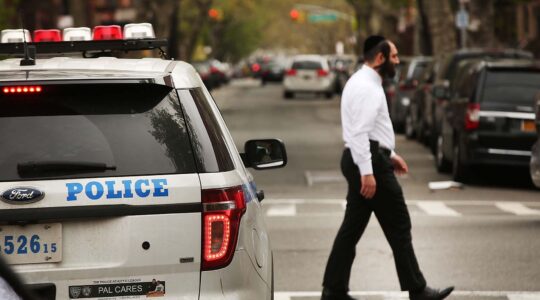These days, most conversations about Israel have to do with politics alone, but there was once a time that young American Jews, particularly in New York, were as conversant about Israeli music and dance as they are now about things more somber. It was in the early 1960s when amateur Hebrew chorales and Israeli dance troupes began performing in major performance halls, and an Israeli folksinger such as Geula Gill was even the opening act for Woody Allen.
This is the season when that old spirit shows it is very much alive. This past Sunday, HaZamir, a high school-age spin-off of the legendary Zamir Chorale, appeared at Avery Fisher Hall with 21 different groups from across the United States and another five from Israel.
And this coming Sunday, March 29, more than 250 dancers will participate in the 64th annual Israel Folk Dance Festival, sponsored by the Israeli Dance Institute, at Martin Luther King High School on the Upper West Side. The festival will commence at 11 a.m. with a free fairground of crafts, food, and Israeli dance opportunities followed by the more practiced performances at 3:30 p.m. (Tickets for the dance festival at 122 Amsterdam Ave. near West 65th Street, are $18; $12 for children and seniors.)
The dancers, mirroring the increasing diversity and influences in Israel itself, will include Russians and South Americans, and they’ll even do some tap. There are now Israeli dance festivals in Boston, Washington, D.C., and Miami, which has been a magnet for the South American groups.
Ruth Goodman has grown up with the Israel dance phenomenon, from performing to coaching to now directing the dance institute. Her schedule is as whirling as the dances, indicative of the lively Israeli dance scene. Aside from directing the festival, Goodman, on Mondays, leads 50-60 dancers at Columbia University’s Kraft Center. Tuesday, she directs dance sessions at the Conservative Synagogue of Riverdale. Wednesday nights, she leads more than 100 dancers at the 92nd Street Y’s famous Israeli dance night (the Y’s Wednesday night event is in its 64th year, concurrent with the dance festival).
And that’s when she’s not leading groups at high schools such as Heschel and Ramaz. Heschel, Goodman says, also has “a month-intensive of Israeli dance in the weeks before Yom Ha’Atzmaut, for kindergarten through fifth grade.”
“Music can take us to a higher level,” she says, “and dance can bring us together, even if we have different ways of being Jewish or loving Israel. In Israeli dance there’s a sense of freedom, reflective of the pioneering spirit. The chalutzim [pioneers] would work like crazy all day long and then throw their arms around each other, and dance for joy. You were in a new world where you were building something, and at night your feet barely touched the ground, you could jump and express yourself freely, like [the biblical verses of] David dancing with abandon. Even in New York, there’s something magical about coming into a folk dance session, hearing Hebrew, being physical, feeling the music — it cuts through everything.”
The New York Jewish Week brings you the stories behind the headlines, keeping you connected to Jewish life in New York. Help sustain the reporting you trust by donating today.




